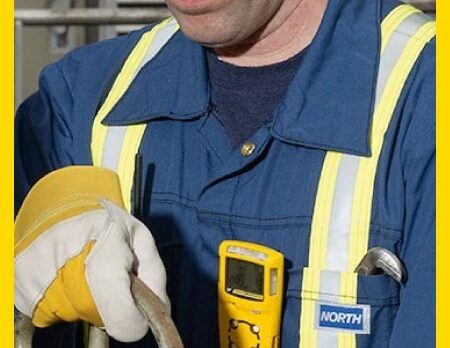Construction and Key Gas Challenges
Workers in the construction industry are at risk from a wide variety of hazardous gases including Carbon Monoxide (CO), Chlorine Dioxide (ClO2), Methane (CH4), Oxygen (O2), Hydrogen Sulphide (H2S) and Volatile Organic Compounds (VOC’s).
Through the use of specific equipment, transport and the undertaking of sector specific activities, construction is a main contributor to the emission of toxic gases into the atmosphere, which also means construction personnel are more at risk of ingestion of these toxic contaminants.
Gas challenges can be found in a variety of applications including building material storage, confined spaces, welding, trenching, land clearing and demolition. Ensuring the protection of workers within the construction industry from the multitude of hazards they may encounter is very important. With a specific focus on safeguarding teams from harm by, or the consumption of, toxic, flammable and poisonous gases.
Gas Challenges
Confined Space Entry
Workers are more at risk from hazardous gases and fumes when they are operating within confined spaces. Those entering these spaces need to be protected from the presence of flammable or/and toxic gases such as Volatile Organic Compounds (ppm VOC), Carbon Monoxide (ppm CO) and Nitrogen Dioxide (ppm NO2). Undertaking clearance measurements and pre-entry safety checks are paramount to ensure safety before a worker enters the space. Whilst in confined spaces gas detection equipment must be worn ongoingly in case of environmental shifts which make the space no longer safe to work in, due to a leak for example, and evacuation is needed.
Trenching and Shoring
During excavation works, such as trenching and shoring, construction workers are at risk of inhaling harmful gases generated by degradable materials present in certain ground types. If undetected, as well as posing risks to the construction workforce, they can also migrate through subsoil and cracks into the completed building and harm housing residents. Trenched areas can also have reduced oxygen levels, as well as contain toxic gases and chemicals. In these cases atmospheric testing should be performed in excavations that exceed four feet. There is also the risk of hitting utility lines when digging which can cause natural gas leaks and lead to worker fatalities.
Building Material Storage
Many of the materials used within construction can release toxic compounds (VOC’s). These can form in a variety of states (solid or liquid) and come from materials such as adhesives, natural and plywood’s, paint, and building partitions. Pollutants include phenol, acetaldehyde and formaldehyde. When ingested, workers can suffer from nausea, headaches, asthma, cancer and even death. VOCs are specifically dangerous when consumed within confined spaces, due to the risk of asphyxiation or explosion.
Welding and Cutting
Gases are produced during the welding and cutting process, including carbon dioxide from the decomposition of fluxes, carbon monoxide from the breakdown of carbon dioxide shielding gas in arc welding, as well as ozone, nitrogen oxides, hydrogen chloride and phosgene from other processes. Fumes are created when a metal is heated above its boiling point and then its vapours condense into fine particles, known as solid particulates. These fumes are obviously a hazard for those working in the sector and illustrate the importance of reliable gas detection equipment to reduce exposure.
Health and Safety Standards
Organisations working in the construction sector can prove their credibility and safety operationally by gaining ISO certification. ISO (International Organisation for Standardisation) certification is split across multiple different certificates, all of which recognise varying elements of safety, efficiency and quality within an organisation. Standards cover best practice across safety, healthcare, transportation, environmental management and family.
Although not a legal requirement, ISO standards are widely recognised as making the construction industry a safer sector by establishing global design and manufacturing definitions for almost all processes. They outline specifications for best practice and safety requirements within the construction industry from the ground up.
